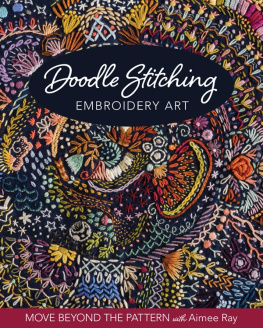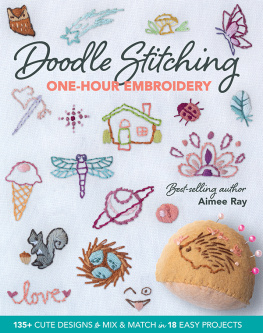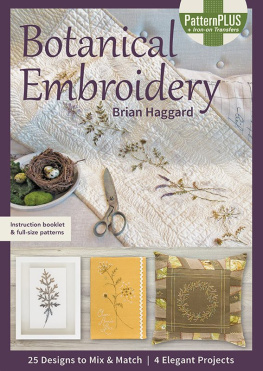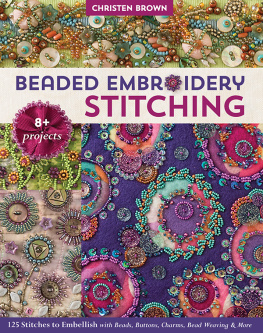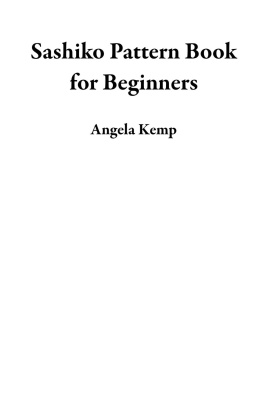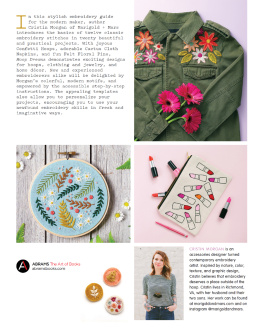
Publisher: AMY BARRETT-DAFFIN
Creative Director: GAILEN RUNGE
Acquisitions Editor: ROXANE CERDA
Managing/Developmental Editor: LIZ ANELOSKI
Technical Editor: DEBBIE RODGERS
Cover/Book Designer: APRIL MOSTEK
Production Coordinator: ZINNIA HEINZMANN
Production Editor: ALICE MACE NAKANISHI
Illustrator: AIMEE RAY
Photo Assistant: KAELEY HAMMOND
Photography by ESTEFANY GONZALEZ of C&T Publishing, Inc., unless otherwise noted
Published by Stash Books, an imprint of C&T Publishing, Inc., P.O. Box 1456, Lafayette, CA 94549
ACKNOWLEDGMENTS
This book has been percolating in my mind for many years, and Im excited to finally share it with you! Big shout-outs go to my editors and art directors at C&T for helping me bring this book to life, and to my family for always supporting me. In addition, I want to send many, many thank-yous to all my sweet online friends and followers who give me endless inspiration and encouragement. Without you, I wouldnt be able to do what I do. This book is for you.

Introduction
HAND EMBROIDERY HAS BEEN AROUND FOR THOUSANDS OF YEARS. NO ONE KNOWS EXACTLY WHEN PEOPLE FIRST BEGAN EMBELLISHING FABRICS WITH NEEDLE AND THREAD, BUT THIS BEAUTIFUL ART FORM CONTINUES TO THRIVE. TODAY, CREATIVE EMBROIDERERS KEEP FINDING NEW WAYS TO STITCH UNIQUE DESIGNS.
The idea for this book has been growing in my mind for several years. Though I love using embroidery to embellish items like clothes, linens, bags, and toys, creating a piece of stitching purely for display is my favorite way to emphasize and appreciate the artistry of embroidery. Making your own artwork with hand embroidery is one of the most rewarding creative practices. Its so satisfying to watch your embroidery art come to life as you add a few stitches at a time. It is a very relaxing and meditative activity, perfect for making art that will bring peace and joy into your life. The calmness of the hours that you spend creating something beautiful to adorn your space will return to you each time you pass your artwork. Plus, when you create your own artwork, you have the freedom to think about how the colors and textures make you feel, how they will interact with the other pictures and objects you display, and how they reflect your personality and the mood and energy that you want your home to embody.
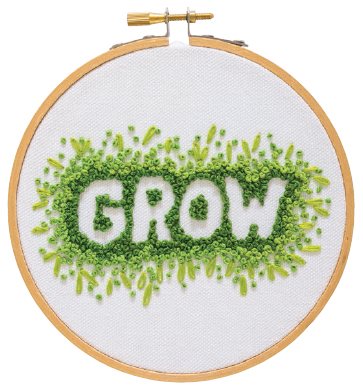
Its easy to fit embroidery into your busy daily life, especially if youre doodle stitching. Doodle stitching is my freestyle approach to embroidery and doesnt come with many rules. All you need is to learn a few basic stitches and techniques and then its up to you to choose the stitches and colors you want to use. Even if you have just a few minutes a day to stitch, set aside this time and enjoy watching your project come together little by little.
This book will show you the basic techniques and stitches that are simple enough for almost any age or skill level. In Embroidery Essentials, youll find descriptions of all of the tools and materials youll be using, easy instructions for getting started with your stitching, as well as diagrams for lots of different embroidery stitches. Youll use many of the stitches for the projects, and Ive included a few extras so that you can experiment and discover your favorites.
Youll then be ready to tackle the twenty projects in this book. Ive designed many of the projects to create artwork that can be framed with a wooden embroidery hoop. These hoop-framed embroidery pieces are easy to hang and display, making perfect additions to any space that needs a special touch, or treasured gifts that commemorate a special date, memory, or moment. In addition to hoop framing, youll discover exciting ways to turn your embroidery into art pieces you can wear and turn into functional, decorative keepsakes, such as pillows, patches, small charms, and fabric scrapbooks. While some projects are one-off pieces that have specific motifs and templates to follow, others open up a whole world of creative possibilities, giving you tutorials for basic techniques and ideas for you to imagine and design your own pieces. Each project includes simple instructions as well as variations you might like to try. Youll also find lots of embroidery patterns you can transfer and stitch to your fabric. Feel free to use any of these ideas as a starting point and take your work in any direction you choose. Add your own details, combine different techniques, customize the patterns, and create your own designs. Mix and match the patterns or include words or dates using the alphabet and number designs.

Have fun with these projects and patterns! I hope youll enjoy learning new embroidery techniques with them and find lots of inspiration to create one-of-a-kind embroidery art.
Embroidery Essentials
EMBROIDERY IS ONE OF THE EASIEST CRAFTS TO LEARN AND REQUIRES ONLY A FEW SIMPLE TOOLS THAT ARE EASY TO FIND. BEFORE YOU START EMBROIDERING, YOULL NEED TO TRACK DOWN A FEW BASIC ITEMS AND LEARN SOME EASY STITCHES AND TECHNIQUES.
MATERIALS AND TOOLS
You can start stitching with just some fabric, floss, an embroidery needle, and a hoop, but you might find it useful to have additional items on hand. Plus, there will be certain tools youll need to complete several of the projects in this book. All the materials and tools are relatively inexpensive, and chances are good that you already have some of them on hand. If not, you can find them all at your local craft store.

Embroidery Toolbox
Embroidery hoop (check the individual project instructions for suggested sizes)
Embroidery and sewing needles
Embroidery floss
Fabric stabilizer
Iron
Ironing board or towel
Needle threader
Nonpermanent fabric marker
Pencil
Pincushion
Ruler
Scissors
Straight pins
Thimble
Tracing and transferring tools (such as dressmakers carbon paper)
Tweezers
Fabrics and Other Materials
The most common fabrics used for embroidery are quilting cotton, linen made for handwork, and Aida cloth (a heavy fabric with a large, even weave). However, almost any fabric is suitable for embroidery. Heres my general rule: If you can stick a needle through it, you can embroider it. (That includes vinyl, heavy paper, balsa wood, and many other unconventional materials!) For the projects in this book, I mostly used quilting cotton, linen, and canvas.
Delicate materials such as chiffon, silk and sheer fabrics may require an extra bit of care when you secure them on a hoop so that you dont distort or stretch the weave. Fine fabrics and stretchy fabrics like cotton T-shirts usually behave better if you apply removable fabric stabilizer (see Stabilizer) before you start stitching. Craft felt is a sturdy fabric that can easily handle hand stitching and generally wont pucker when embroidered. You may not always need a hoop when stitching on felt, especially if youre using small pieces. Felt is also perfect for finishing up the backs of your finished embroidery hoop art. Transparent stitchable mesh will give you unique results when used for embroidery and is fun to experiment with. If youre just starting to embroider and need some fabric, take a look at your wardrobe or linen closet. You never know what inspiration you might find.
Next page
